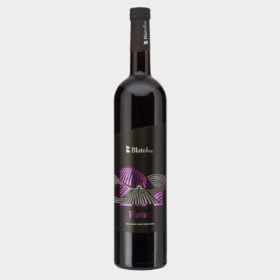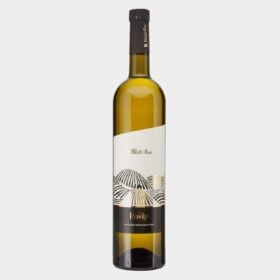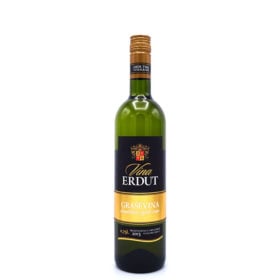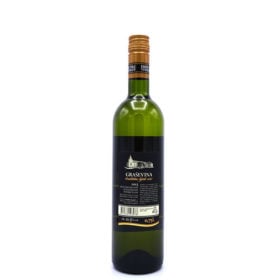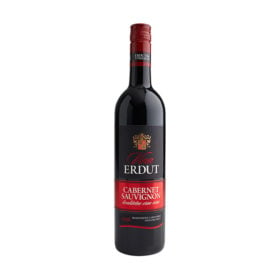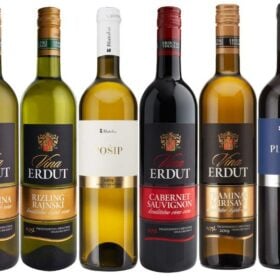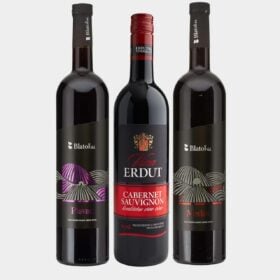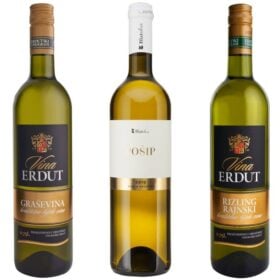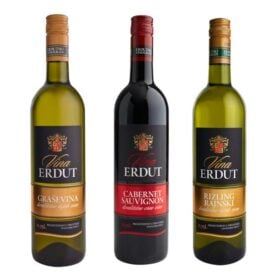Want to know how to taste wine like an expert? It's not as hard as it looks, just follow our guide below. With a few steps you have a good basis to find out how to taste wine.
Content
Wine tasting conditions are important
- Original price was: 19,98. 13,99Current price is: 13,99. Add to Cart
Studies have shown that both background noise and loud music can impair our ability to taste. But a noisy environment also makes concentration difficult. Therefore, try to taste wines in a quiet environment. If this is not possible (for example at festivals) keep in mind that the tasting will be hindered and that you will need more concentration to properly assess the wine.
Choosing the wrong glass can be a disaster: the wrong shape or size, the thickness of the glassware. Or even worse the smell of detergent or dust in the glass. It can all have a major impact on the taste of the wine or the color of the wine. But also the feeling of the wine in your mouth.
Just like the environment, the temperature of the wine will also influence your impression of the wine. The same applies to the age of the wine and any residual flavors from what you have just drunk or eaten. It is therefore very important to make the test conditions as neutral as possible. This gives the wine a fair chance. Is the wine too cold served, warm it with your hands. If the glass looks dirty, rinse it well with the wine, not water, and swirl it around to cover all sides of the glass.
Evaluate the appearance of the wine
Once the tasting conditions are good enough, the next step is to examine the wine in your glass. It should be about 1/4 to 1/3 full.
- Looking straight - Look straight down into the glass with the wine, then hold it towards the light and finally tilt the glass. All this helps you to explore the wine's full color gamut. If you look down you get an idea of the color depth. This indicates the density and saturation of the wine.
- From the side – To check the clarity of the wine, hold the glass up to the light and look at the wine through the side of the glass. A clear wine is positive. A cloudy wine can be a sign of fermentation or chemical problems. But it can also just be an unfiltered wine. Or a wine where it sediment shaken during transport.
- Tilt the glass – Tilt the glass so that the wine thins out towards the rim. This can indicate the age and weight of the wine. If the color is light or pale and watery at the rim, it may indicate a thin wine. If the color appears tawny or brown (for a White wine) or orange or rusty brick (for a Red wine) is either an older wine or one that has oxidized and may be past its prime.
- Tilt - Tilting the glass so that the wine thins towards the rim can indicate the age and weight of the wine. If the color is pale and watery at the edge, this may indicate a thin wine. if White wine looks tan (dark beige) or brown or like Red wine orange or rusty brick, it is an older wine or one that has oxidized and may be past its prime.
- Turn the glass - By giving the glass a good turn you can see the "tears" of the wine. These form along the side of the glass and slide down sliding. Good tears indicate ripe, denser and stronger wine with a high alcohol content.
Evaluation of the aroma when tasting wine
After you've seen the wine through your eyes, it's time to aroma to concentrate. Turn the wine and take a series of good pinches of the wine. Repeat and process your experience. Try each aroma that you are experiencing. This is difficult at first, but it gets easier as you train your senses more often. At first, you may want to check out a taste map. There are plenty of examples of this to be found. They will help you in the beginning aroma's to identify.
- Identifying Defects – Start Looking For Defects aroma's. They can indicate that the wine is not good. Corked wine smells like a stale old cellar and tastes like wet cardboard. Wine is a living product and therefore subject to problems and faults† The best known and most notorious of these is 'cork'. Cork flavor can come in both a cheap and an expensive bottle.
- Brettanomyces – a wild yeast often identified as having a sweaty saddle smell. A little bit of “brett” adds an earthy, leathery ingredient to Red wine. But too much will destroy the wine's fruit flavors.
- Vinegar indicates volatile acid, the smell of nail polish, ethyl acetate.
- Fruit flavors – If you haven't found any off-notes, look for fruit flavors. Wine is fermented grape juice, which is why it often smells like fresh fruit unless it's very old, very sweet or cold is. Wine that in oak barrels matured has some more aroma's of vanilla.
- Flowers and herbs – You will find floral aroma's in white wines from one cool climate, such as Riesling, Grasevina, Pinot Grigio, Gewürztraminer and Viognier.
- Sauvignon Blanc is grassy and Cabernet Sauvignon spicy with hints of vegetation. Rhone-red wines sometimes show Provencal herbs. Just as Red wine as Plavac Mali, Syrah (Shiraz) On Merlot from Dalmatia of Istria.
- Some wines are characterized as earthy. Mushrooms, moist earth and leather occur in many red wines. Mushrooms can add nuances. It can also help you determine a possible grape or place of origin of the wine. But too much is a sign of grapes not ripening enough or coming from an inferior clone.
- Oak barrels and wood aromas – If it aroma wood, smoke, vanilla, toasted nuts or caramel, the wine was probably aged in new oak barrels.
- The type of oak, the age of the barrels, the charcoal content and the way the winemaker has mixed and matched them also have a major influence on wine tasting and taste. Casks can impart a wide variety of scents and flavors to finished wines.
- Taste the other wines – Jonge white wines can have a smell that reminds you of beer that often comes from the yeast. Strong taste of honey in sweeter wines is often the case with very sweet dessert wine.
- Chardonnays that sometimes smell like buttered popcorn or caramel are a sign of malolactic fermentation, which converts malic acid to lactic acid, which softens the wine and aroma's opens.
- Old wines are often more complex and less fruity when tasting.
Time to taste the wine
Take a sip and aerate the wine by swirling it in your mouth. You could use a variety of fruit, flower, herbal, mineral-, oak and other flavors should expect. If you repeat this you often find out very well what the aroma is of the wine. Start by identifying the flavors you experience when tasting the wine and then move on to determine if the wine is balanced, harmonious, complex and evolved.
- Balance – Balanced wine should have its flavor components in good proportion. We can sweet, acid, detecting salt and bitterness in the wine when tasting it.
- Sweet and acid are important components of wine and bitterness often comes from the astringency of tannins.
- No single formula fits all wines, but balance is key. If the wine too acid, too astringent, too sugary, too hot (alcoholic), too bitter or too weak, it is out of balance.
- Harmony – A harmonious wine has its flavors proportioned and well integrated. It has no sharp edges or anything sticking out from the other.
- Complexity – A complex wine taste changes from the moment you taste it to the moment you swallow it. Once you understand the basic steps of wine tasting, it's time to experiment for yourself. Taking notes is helpful for your understanding of wine. It's time to discover which flavors you can discover when tasting wine.


